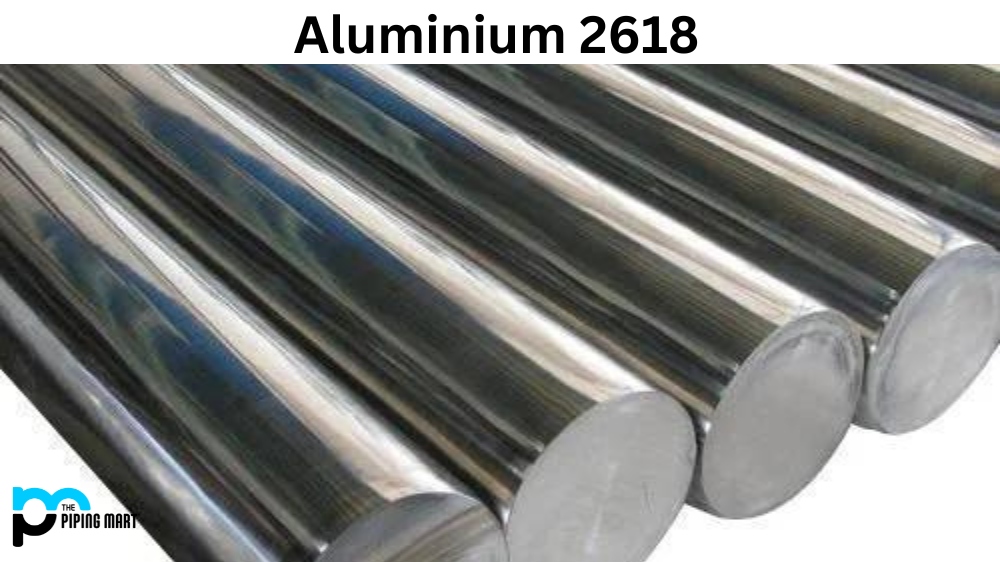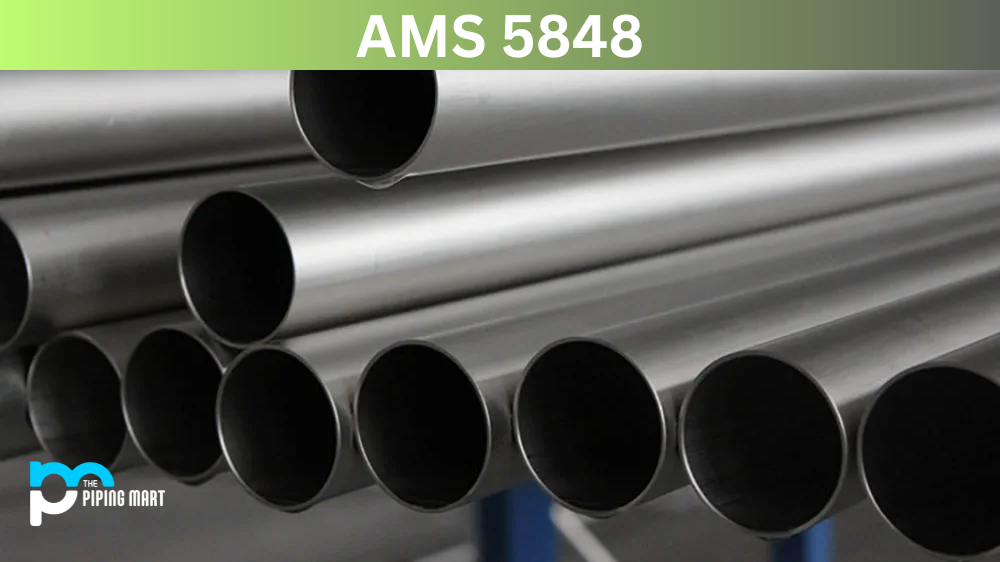Aluminum 2618 is an alloy used in various applications, such as automotive parts, aerospace components, and more. It has a good combination of strength, corrosion resistance, heat resistance, and machinability. In this blog post, we will discuss the composition and properties of Aluminium 2618. We will also discuss its uses, corrosion resistance, heat resistance, heat treatment, machining, and welding requirements.
2618 Aluminum Composition
AL 2618 is an aluminum alloy composed primarily of Aluminium (Al), Copper (Cu), Magnesium (Mg), and Silicon (Si). This combination gives the alloy an excellent strength-to-weight ratio and excellent ductility.
|
Element |
Composition |
|
Copper |
1.9 – 2.7 |
|
Silicon |
0.25 |
|
Iron |
0.9 – 1.3 |
|
Magnesium |
1.3 -1.8 |
|
Titanium |
0.04 – 0.1 |
|
Nickel |
0.9 – 1.2 |
|
Others |
0.05 |
|
Aluminum |
92 – 94 |
2618 Aluminum Chemical Properties
UNS A92618 is an alloy of aluminium, copper and magnesium with a high strength-to-weight ratio, making it an ideal choice for many engineering applications. Its notable chemical properties include excellent corrosion resistance and weldability, in addition to superior fatigue and stress resistance. As such, this alloy is commonly used in aircraft and automotive parts that require these specific characteristics, such as pistons, cylinders and gears. Additionally, the weak thermal expansion coefficient of Aluminum 2618 makes it suitable for heat exchanger fins and heat transfer plates as well.
2618 Aluminum Mechanical Properties
The mechanical properties of grade 2618 are superior to many other alloys because it can withstand high temperatures without losing its strength or becoming brittle.
2618 Aluminum Physical Properties
The physical properties of the alloy include good electrical conductivity and thermal conductivity.
|
Property |
Metric |
Imperial |
|
Density |
2.76 g/cc |
0.0997 lb/in^3 |
|
Melting Point |
549 – 638 °C |
1020 – 1180 °F |
2618 Aluminum Thermal Properties
|
Thermal Properties |
Metric |
Imperial |
|
Thermal Conductivity |
146 W/m-K |
1010 BTU-in/hr-ft²-°F |
|
Specific Heat Capacity |
0.875 J/g-°C |
0.209 BTU/lb-°F |
2618 Aluminum Uses
This makes it suitable for applications where exposure to chemicals or other corrosive substances may be an issue. Additionally, it is often used for marine applications due to its high corrosion resistance when exposed to salt water or salt air environments.
Corrosion Resistance
Alloy 2618 is widely used in automotive parts due to its light weight combined with its good strength-to-weight ratio. It is also used in aerospace components because it has excellent corrosion resistance even in harsh environments like salt water or salt air.
Heat Resistance
Aluminium 2618 has excellent heat resistance compared to other aluminum alloys thanks to its copper content which helps stabilize the alloy at higher temperatures. Because of this property, Aluminium 2618 can be safely heated up to 470°C without fear of degradation or loss of strength.
Heat Treatment
Heat treatment requirements for this alloy involve solutionizing at 480°C for 2 hours and quenching at room temperature in oil or water, depending on the desired mechanical properties.
Machining
When it comes to machining Aluminium 2618, some important factors must be taken into consideration, such as proper tool selection and cutting speeds, since the alloy is prone to hardening during machining operations if not done properly. Additionally, coolant should always be used during machining operations as well as chip breakers if possible, since chips can cause excessive wear on tools if not removed properly from the workpiece surface during machining operations.
Welding
Aluminium 2618 can also be welded using various processes, such as MIG/TIG welding. Still, care must be taken when doing so since the weld zone tends to become brittle if overheated during welding operations due to the high silicon content found in this alloy which causes rapid cooling rates when exposed to large amounts of heat during welding operations resulting in brittleness around the weld zone area after cooling takes place—additionally, preheating before welding is recommended in order to ensure proper penetration while avoiding brittleness around the weld zone area after cooling takes place. Due diligence should also be taken while selecting a filler material since improper selection could lead to cracking due to increased silicon content found within this particular aluminium alloy.
Conclusion
In conclusion, Aluminium Alloy 2618 offers some great benefits due to its combination of aluminum, copper, magnesium & silicon, which gives it great mechanical & physical properties along with excellent corrosion & heat-resistant qualities, making it ideal for use across a wide range applications including those involving harsh environments. Furthermore, the addition of copper helps improve both formability & machinability, making fabrication easier than most other alloys. Finally, Aluminium Alloy 26 18 should always take proper precautionary measures when welded, such as preheating before welding operation & using proper filler materials. Overall, Aluminum Alloy 26 18 proves why so many industries continue using this popular aluminum alloy today.
Meet Heer, a dynamic and driven writer learning tricks of her trade in the metal industry. With a background in Digital Marketing, Heer brings a unique perspective to her writing, sharing valuable insights. Apart from blogging she like reading and hiking.




